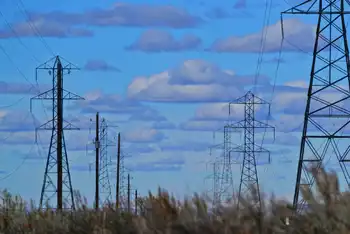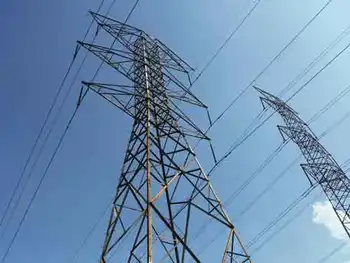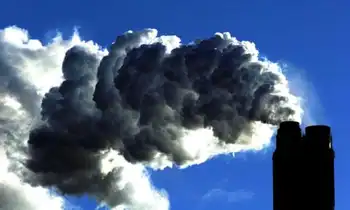Battle brewing over proposed power plant
By McClatchy Tribune News
Substation Relay Protection Training
Our customized live online or in‑person group training can be delivered to your staff at your location.

- Live Online
- 12 hours Instructor-led
- Group Training Available
In January, POWER4Georgians, a consortium of 10 electric cooperatives, applied for environmental permits to build and operate the proposed Plant Washington. It would generate about 850 megawatts of power a day on a 1,200-acre site about eight miles north of Sandersville.
Another new coal-fired power plant is also planned west of Albany by a different company, but that project is mired in court. As coal-fired power faces increasing opposition for its contributions to smog, soot and global warming, the Plant Washington proposal is being fought by environmental groups.
"I can't even tell you how it took the breath out of me to hear they were looking to build a new coal plant on the Oconee River," said Deborah Sheppard, executive director of the Altamaha Riverkeeper group.
"As long as our state and country continue to eek electricity through new plants, it will only increase the demand for more new plants, and that will only increase stresses on our water and air."
Sandersville Mayor Jimmy Evans said locals have questioned the effect of truck and rail traffic on neighbors and impacts to the groundwater table, but they seem to generally support the effort.
The plant, to be located on former farmland with few immediate neighbors, will bring about130 permanent jobs and a substantial but as-yet-undetermined boost to the county tax base. Local electricity provider Washington EMC is one of the 10 cooperatives that teamed to create POWER4Georgians, which would own the plant.
The cooperatives would sell the electricity. Other Middle Georgia partners include Central Georgia EMC and Upson EMC.
But some of the biggest players, such as Cobb EMC, are in fast-growing areas outside the region. POWER4Georgians maintains that without the plant, customers would soon have to pay perhaps twice as much for electricity, and the state would experience power shortages.
Most of the cooperatives had contracts with private utilities such as Georgia Power to provide some of their electricity. These contracts are expiring soon and cannot be renewed at affordable prices, said Dean Alford, whose Conyers company, Allied Energ Services, is the primary developer of the plant.
Oglethorpe Power was created by the state's electricity cooperatives in 1974 to deal with the same problem. But Oglethorpe has its plate full with the effort to add two nuclear reactors to Plant Vogtle, a joint project with Georgia Power and others.
Alford said some cooperatives can't wait.
By 2015, Alford said, growing population will mean the partners in POWER4Georgians need one-third more base power capacity than they have now. Critics say power companies should focus on energy efficiency and developing "green" power sources such as solar energy.
Alford said POWER4Georgians is involved in both these efforts, but "there's just no way around needing new generation."
POWER4Georgians needs at least six environmental permits for the plant: an air pollution permit, groundwater and surface water withdrawal permits, a water discharge permit for used water that goes back into the Oconee River, a permit for the storm water running off from the plant, and a permit for storing the solid waste such as gypsum and fly ash generated by the plant.
The state Environmental Protection Division is talking with the company and its experts. After satisfying any concerns, the EPD would then issue draft permits and let people comment on them. Public meetings and hearings must be held during this process.
Jack Capp, permitting manager for the EPD's air branch, said draft permits could be issued by the end of the year. Plant developers already held a public meeting in Sandersville days after filing the permit applications, and Alford has been meeting with community groups since then, he said.
New power plants are required to install the "best available pollution control technology" to limit air pollution.
Plant Washington is proposed to be the first in the state installed with wet scrubbers and other advances.
Power plants are some of the biggest contributors to ground-level ozone, the primary component of smog, and to fine particle pollution, such as soot that can be absorbed deep in the lungs. Both types cause heart and lung problems.
Macon is in a federal nonattainment zone for having dangerous levels of fine particle pollution, and it is expected to fall back into nonattainment for its ozone pollution under new federal rules. (Athens and Augusta, also not far from Sandersville, are also expected to fail the new ozone standard.) Scientists and regulators have identified Georgia Power's nearby Plant Scherer, the largest coal-fired power plant in the country, as one of the prime culprits for Macon's air pollution.
Washington County and neighboring Wilkinson County already struggle with unsafe levels of fine particle pollution. They have not yet been designated a nonattainment zone, but without improvements they probably will be, state regulators have said.
Evans said he feels comfortable that the new coal-fired plant won't put the county in jeopardy for nonattainment.
Alford said the plant is being designed to release zero measurable fine particles, and its technology will make ozone contributions far less than those of nearby power plants like Scherer. Capp said the EPD can't approve the plant if it will cause or contribute to violations of a national air standard.
That means it can't diminish a county's air quality enough to put the area in a nonattainment zone, and it can't contribute significantly to air pollution in an existing nonattainment area. However, there is a threshold for allowing some additional pollution, he said.
POWER4Georgians must provide computer modeling showing the effect of its air pollution on a broad area, and the state will do some of its own modeling, Capp said. The company has not yet specifically addressed its effects on Macon's air quality, Capp said. Alford said POWER4Georgians is not proposing a larger plant because that would require much more work to reduce harm to air and water.
"And I can assure you this will not be expanded in the future," he said.
Coal-fired power plants also emit mercury, which eventually accumulates in fish tissue. As a neurotoxin, mercury can damage fetuses and cause developmental problems in children.
Chandra Brown, the Ogeechee Riverkeeper, said the state already warns the public to limit consumption of fish from the Ogeechee River because of its mercury levels. "Any addition of mercury is just unacceptable," she said.
Like all coal-fired power plants, Plant Washington would use large amounts of water for its cooling towers. But POWER4Georgians' plan is unusual for its partial reliance on groundwater, as well as a 30-mile pipeline from the plant to its primary water source.
The plant is requesting to use 16 million gallons of water a day from the Oconee River.
Alford said the distance prevents any harm to wetlands and puts it near a major electricity transmission line.
Sheppard, with the Altamaha Riverkeeper, said the Oconee River already is under major stress from development in the Athens area, and it receives significant industrial pollution downstream. The less water in the river, the less there is to dilute the pollution.
"Is it fair to be using water in the Oconee to create energy for north Cobb County?" Sheppard asked. "There's serious equity issues here." However, Alford noted that at least all the power generated by Plant Washington would be used in Georgia - unlike power from some of the larger Georgia Power plants or the other proposed new coal-fired plant, Plant Longleaf.
During times when the Oconee River is low, POWER4Georgians wants approval to withdraw 16 million gallons a day from 16 ground water wells. Wells would be located at intervals along the plant's pipeline to the river and would tap into the Cretaceous aquifer, Alford said.
Having multiple wells reduces the impact on the water table at each site, said Bill Frechette, coordinator for the EPD groundwater permitting unit. All public water systems in Washington County - including the more than 6,000 households in Sandersville - rely on the same aquifer, and rural residents get their water from private wells, Evans said.
But he said the area has not experienced water shortages during the current drought.
"It's true the aquifer contains a lot of water," Frechette said. "On the other hand, there are a significant amount of users in Washington and Wilkinson counties and also the kaolin operations. We will be concerned about impacts on other users."
Alford said Plant Washington would probably rely on groundwater 40 percent of the time. He said the company's analysis shows this would have a negligible effect on the water table - but if anyone's well went dry, POWER4Georgians would replace it.
Frechette said that if the groundwater permit is granted, the plant will easily be among the top 25 groundwater users out of the 475 permitted in the state.
Alford said the company will augment its water supply by reusing storm water at the plant and reclaiming 4 million to 6 million gallons of water a day from local kaolin mines.
Brown praised the effort to use kaolin wastewater but voiced some questions about its effects. She noted that the state doesn't regulate the use of water in kaolin mining.
"We don't know anything about how much there is being used and what the impacts would be on the streams if that water goes somewhere else," she said. Alford said POWER4Georgians has been monitoring kaolin water use for almost a year to determine how much would be available for the power plant.
He declined to say which kaolin companies have been involved. The plant would return a million to 4 million gallons of water to the Oconee River daily, Alford said.
The EPD has already received comments from some groups about the proposed plants, most of them urging denial of the permits. Rick and Jennifer Johnson, Washington County property owners who live in Big Canoe, in north Georgia, wrote that "Washington County does not need a new source of air pollution.... We do not need another contributor to asthma cases, chronic bronchitis a d other health problems."
Greenlaw, a firm of environmental advocacy lawyers, filed comments on behalf of 15 environmental organizations, saying POWER4Georgians has failed to sufficiently analyze the health risks of the plant.
"It's the worst modeling our experts have ever seen," said Justine Thompson, executive director of Greenlaw. Greenlaw also has appealed permits for the proposed Plant Longleaf.
Some environmental groups contend that the state also should limit the amount of carbon dioxide released by the new plant. The federal government doesn't regulate carbon dioxide, the primary "greenhouse gas" responsible for global warming, although Congress is now debating legislation that would change that. Thompson said if both Plant Washington and Plant Longleaf are approved by the state, they will contribute carbon dioxide equivalent to driving 2.5 million new cars about 12,000 miles annually.
According to the POWER4Georgians Web site, Plant Washington will require less than two-thirds the amount of coal and emit less than two-thirds the amount of carbon dioxide as traditional coal-fired power plants.











